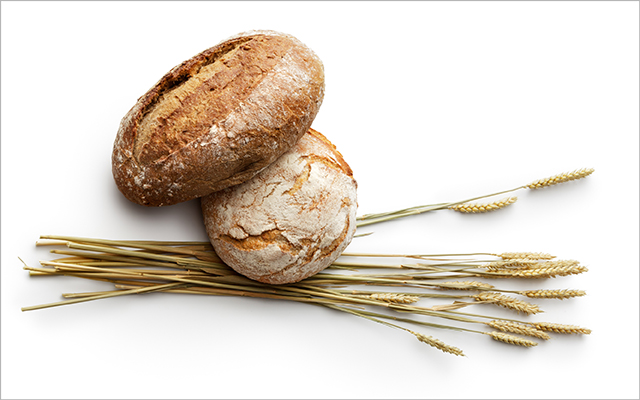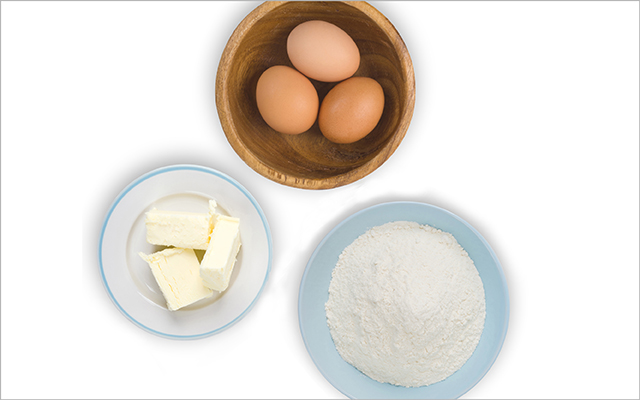Food intolerances are common in people with IBS. While nutrition changes alone don’t usually cure all symptoms, food protocols that remove common irritants give the gut lining a chance to heal, creating a solid foundation for a healthy microbiome and a positive-feedback loop that supports overall gut health. These two approaches are commonly used to treat IBS.
Elimination Diets
A modified elimination diet involves removing one common food allergen from your diet for two to four weeks, and paying attention to the effects on your symptoms. Eliminating dairy is a good place for people with gut distress to start. About one in four Americans has some form of lactose intolerance, and some IBS patients enjoy at least partial remission when they give up dairy, says gastroenterologist Shanti Eswaran, MD. “This is the first thing to try.”
The second item to eliminate is gluten. Although celiac disease is rare, many people suffer from nonceliac gluten sensitivity. This can cause symptoms similar to celiac symptoms, such as bloating, gas, rashes, and brain fog, but it isn’t considered an autoimmune disease.
Because there is no specific diagnostic test for gluten sensitivity, the only way to check is to remove it and then reintroduce it. “Cut gluten for two to three weeks and see what happens,” says integrative gastroenterologist Robynne Chutkan, MD. “It is DIY medicine at its best. Chances are, you are going to feel better.” Gluten is found in wheat, rye, barley, and spelt.
A comprehensive protocol eliminates all the most common food allergens — dairy, gluten, yeast, eggs, corn, soy, and peanuts — for two to four weeks. If food sensitivities are triggering the IBS, relief should come quickly with this approach.
(For a guide to the Institute for Functional Medicine’s elimination diet, as well as instructions for reintroducing foods over time, visit ELmag.com/ifmdetox.)
Low-FODMAP Diet
FODMAP stands for ferment-able oligosaccharides, disac-charides, monosaccharides, and polyols — foods that contain either simple or complex sugars that are fermented by bacteria in the small intestine and colon. As FODMAPs ferment, they release short-chain fatty acids and gas (mostly carbon dioxide and hydrogen). The gas stretches the bowel (a.k.a. intestine), which causes abdominal pain and bloating. Fructose, lactose, and polyols draw water into the bowel, which can worsen diarrhea.
The low-FODMAP diet restricts those fermentable foods and has provided relief to many IBS sufferers. It is probably the most challenging of all elimination diets because it removes otherwise healthy foods containing particular carbohydrates that can provoke gas and bloating.
The protocol has two phases. The first lasts two to four weeks and involves a strict elimination of all high-FODMAP foods, such as wheat; some vegetables (including onions, garlic, cabbage, and broccoli); some fruits (such as stone fruits, apples, and pears); sorbitol, which is often found in chewing gum and sugar-free foods; and dairy products containing lactose.
This strict avoidance phase is brief; it is a test to determine sensitivity. “The idea behind the low-FODMAP diet is that you won’t really know what you’re sensitive to unless you take everything out and see how you feel,” says -Eswaran. “This isn’t something you want to stay on long term.”
The second phase is a slow reintroduction of specific FODMAP foods to see which you can tolerate. For this phase, it’s important to work with a healthcare provider who is trained in the diet, says Eswaran. “The reintroduction process can take many weeks, and guidance is important to keep you from getting frustrated.”
Eswaran led a study of 90 IBS sufferers: Half followed a low-FODMAP diet and the other half took common-sense measures, such as eating smaller meals and cutting back on caffeine and alcohol. At the end of six weeks, more than 50 percent of the people on the low-FODMAP diet saw a major reduction in abdominal pain, compared with 20 percent in the control group.
This originally appeared in “Irritable Bowel Syndrome” in the January-February 2018 issue of Experience Life.




This Post Has One Comment
I totally agree with the information given regarding the low-FODMAP diet. I added kefir and garlic to my diet and noticed a significant improvement in my gut health.